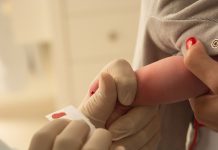Research published in BMJ Global Health has found a hotspot for HIV, tuberculosis and malaria in a regional corner of Africa
Located in western Ethiopia, which borders South Sudan, the Gambela region has been found to have a high rate of all three infectious diseases. “Human immunodeficiency virus (HIV), tuberculosis and malaria are the three most serious infectious diseases in the world, causing high morbidity and mortality rates, especially in low and middle-income countries,” said Dr Kefyalew Alene, from the Curtin School of Population Health and the Telethon Kids Institute.
The study is suggesting a new way to tackle these highly infectious diseases, rather than with a national response the research is promoting a call for targeted health support – a more focused response.
Why such high infection rates?
“This study identified that the Ethiopian region of Gambela, which is home to more than 330,000 people, was a hotspot for high cases of HIV, tuberculosis and malaria. The high prevalence of HIV, tuberculosis and malaria in this region may be due to inadequate case management and weaker health systems along the border.”
Through the study, researchers labelled the Gambela region is characterised by low healthcare access, low socioeconomic index, and high temperatures and rainfall. “This highlights that targeting health services at a local level would be more effective than a nationwide service response,” Dr Alene said.
“This highlights that targeting health services at a local level would be more effective than a nation-wide service response.”
“These findings can guide policymakers in Ethiopia to design geographically targeted and integrated disease control programs to achieve maximum impact in addressing the high prevalence of cases.”
Infectious diseases such as HIV and malaria are still the top causes of death around the world, and finding new ways to tackle and control the spread of them will make a global difference.
The full paper, ‘Spatial co-distribution of HIV, tuberculosis, and malaria in Ethiopia’, can be found online here.








